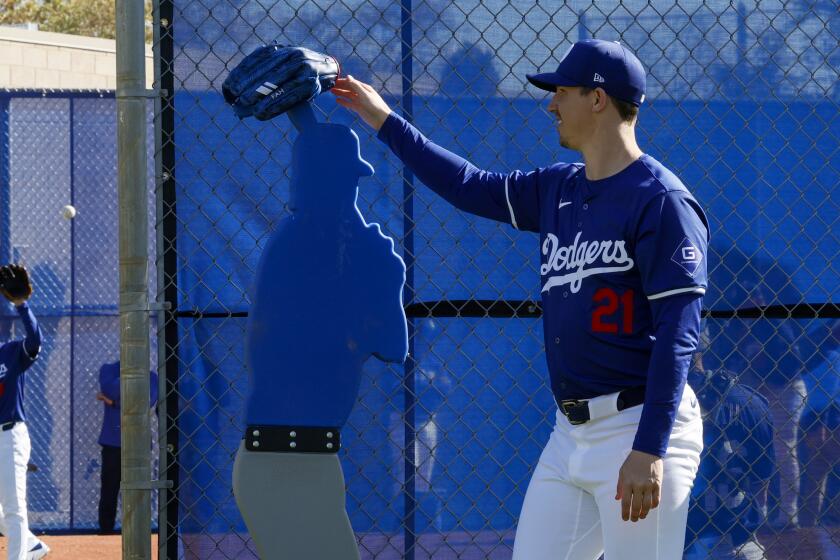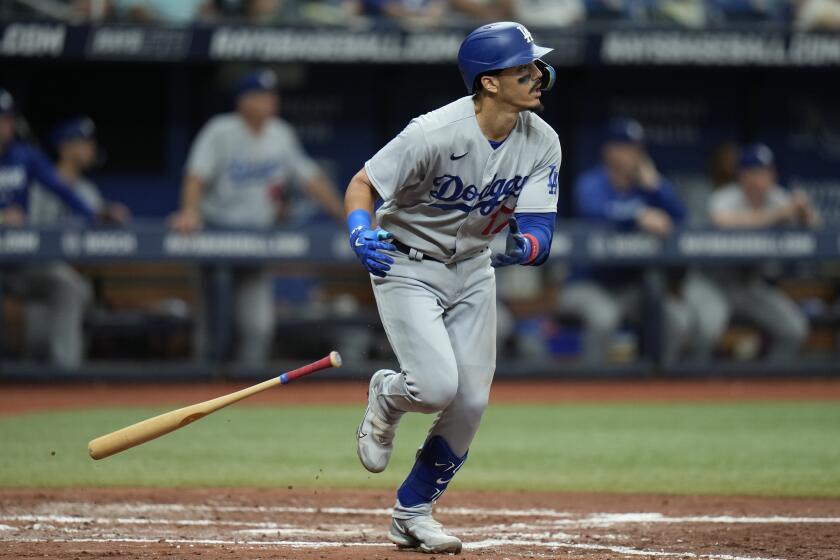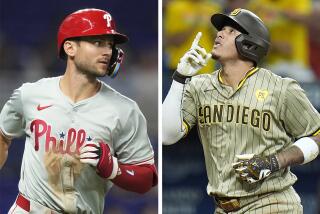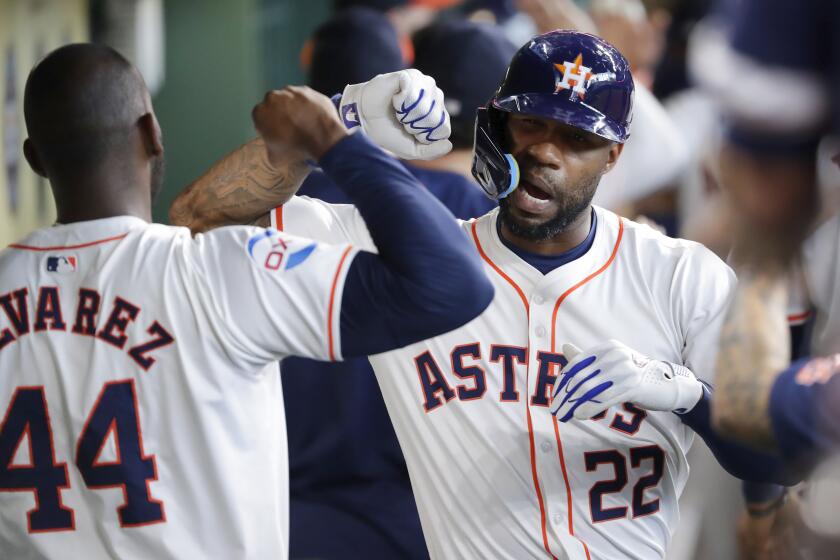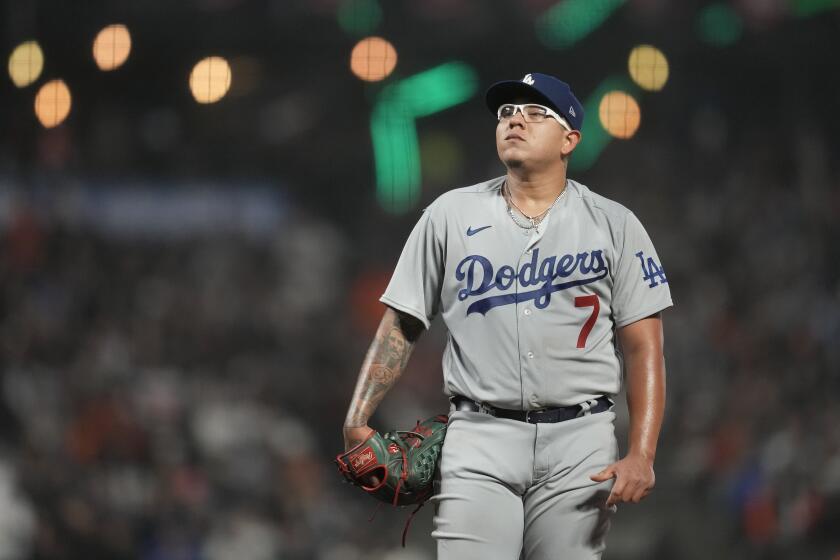Column: ‘It’s a blast’: Ex-Dodger Andre Ethier relishes role of mentor with focus on Miguel Vargas
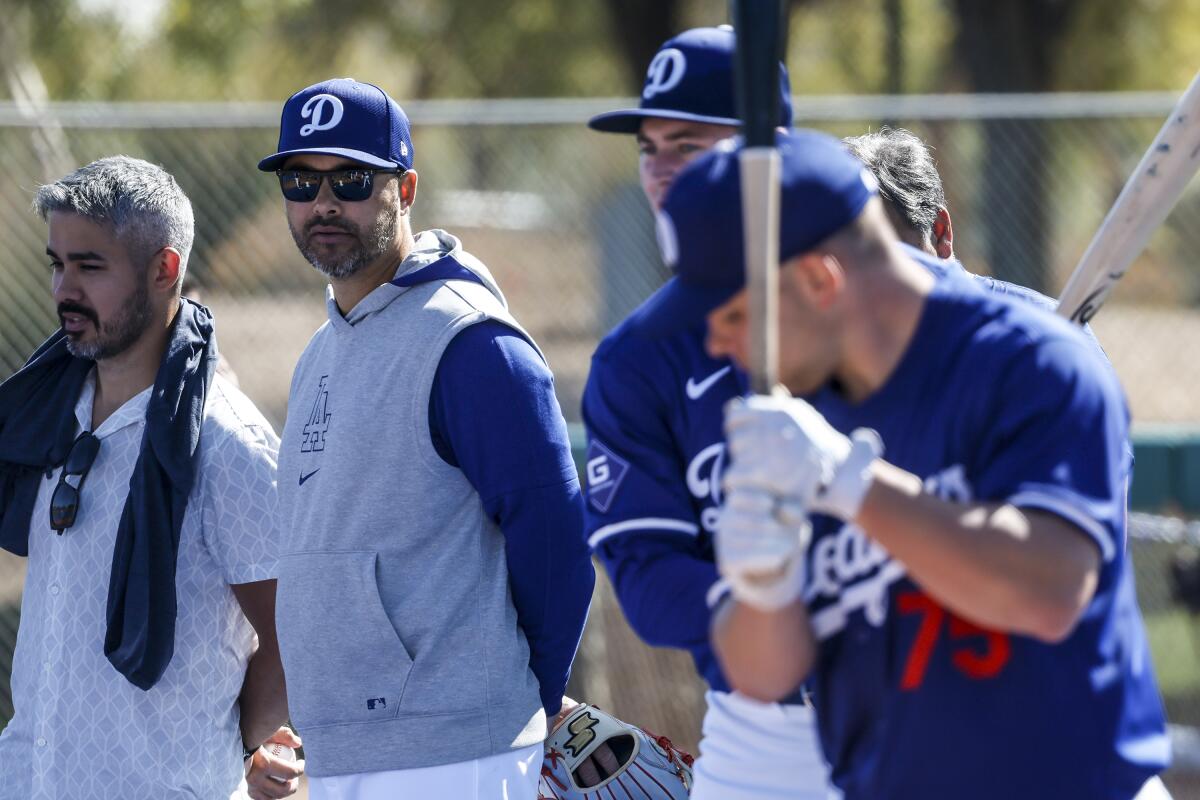
PHOENIX — Wearing a smile as broad as his shoulders, Miguel Vargas explained how he viewed Andre Ethier as more than an instructor.
Ethier was a confidant.
Ethier was a friend.
“He’s a tremendous person,” Vargas said in Spanish.
Vargas described the former two-time All-Star as patient and supportive, as calm and sympathetic.
A couple weeks into this year’s spring camp, Walker Buehler’s exact timetable to return remains unclear. But it is not an unexpected development.
Imagine that.
When he was a player, Ethier was known for a temper that was as explosive as his left-handed swing. Now a 41-year-old retiree, he is a model of calmness and wisdom, and now he’s guiding Vargas in his transition to the outfield.
More than six years removed from the final at-bat of a 12-year career spent entirely with the Dodgers, Ethier was invited to camp this year by manager Dave Roberts. Ethier has assisted first base coach Clayton McCullough in instructing the team’s outfielders, and he has taken a particular interest in Vargas, who is new to the position.
“It’s a blast,” Ethier said.
While satisfied with his career and content with his current life, Ethier acknowledged he missed certain elements of being a player.
“I tell people there’s nothing more that I’d like to have than one more at-bat,” he said. “Just one more at-bat. Nothing more. Just to stand in the batter’s box again, just to see that view of Dodger Stadium again. I’d like to stand in the outfield again for one game and look at 56,000 people. It’s unbelievable.”
Ethier said he missed wearing a glove. He said he missed shagging fly balls. And he said he missed spring training.
“Honestly, spring training was my favorite time of year,” he said. “It really was. Whether it was here in Arizona or in Florida, I loved going to spring training.”
Ethier is now experiencing spring training again without any major disruptions to his schedule. A Phoenix native, he lives about a 30-minute drive from the Dodgers’ complex. On days he goes to camp, he usually does so after dropping his children off at school.
Players such as Vargas are offered an opportunity to learn from a player who won a Gold Glove in 2011 and finished his career with a batting .285 average.
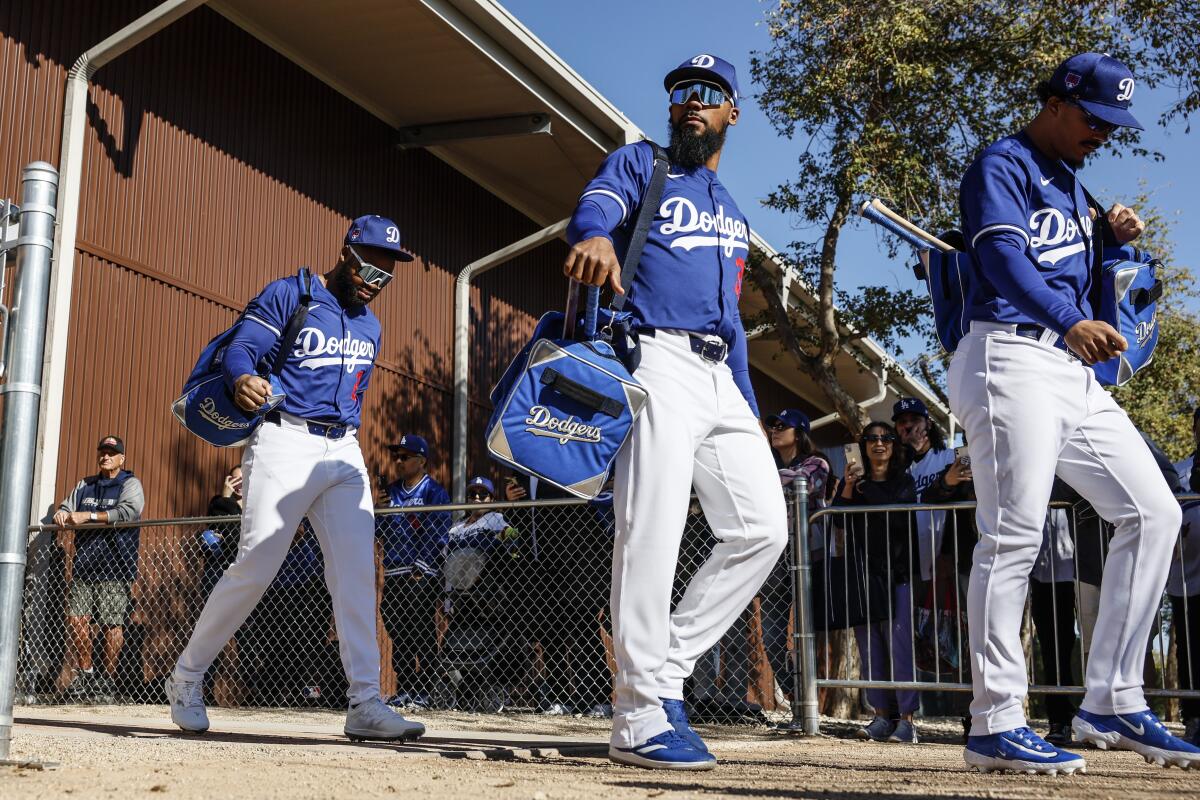
“I love having Dre around,” Roberts said. “He was a very good Dodger, a very good defender. To have him echo or support whatever Clayton McCullough says, I think, is great.”
Ethier has served as an invaluable resource for the 24-year-old Vargas, who is in his fourth major league camp.
A natural third baseman, Vargas was asked to move to second base last year. The switch was complicated by a hairline fracture on his right pinky finger during spring training. Vargas was hit by a pitch on his thumb early in the season, and he was never able to find a rhythm offensively. He was batting .195 when he was sent down to the minor leagues at the All-Star break. He was never called up again.
“Having these injuries, it’d never happened to me,” Vargas said. “It was hard to deal with at the time. Things didn’t go the way I wanted. But you learn, and now I’m ready for the second phase.”
The new phase consists of him learning another new position, as Mookie Betts is now the team’s primary second baseman.
Last week, Vargas approached Ethier and asked him for help. Ethier presented Vargas with techniques he could use to better position himself to run down balls, such as reading hitters’ swing path. Ethier explained the calculus he used to anticipate where a ball might land, offering a hypothetical example of how a left-handed hitter who is a little late is more likely to send a ball spinning toward the left-field line.
Roberts has noticed Vargas’ improvement.
“His jumps on the ball have been great,” Roberts said.
However, Ethier said he wanted to provide Vargas with more than Xs and O’s. Ethier could relate to Vargas’ situation, looking to establish himself as a major leaguer.
Ethier recalled what it meant to him to receive guidance from players who came before him, including Shawn Green and Eric Karros.
“When you’re battling, like some of the guys out here, [it’s important] just to find somebody to be a confidant and maybe even be a little encouraging to say, ‘I’m here pulling for you,’ ” Ethier said.
Miguel Vargas was becoming a more proficient defender at a position he made only 27 starts at in five minor league seasons. Then he suddenly forgot how to hit.
At the same time, Ethier said he’s mindful of not overstepping his boundaries. Players have routines, and Ethier wants to be respectful of that.
“I was in their same shoes,” Ethier said.
Maury Wills mentored Roberts. Sandy Koufax bonded with Clayton Kershaw. This tradition of former players coming back to guide up-and-coming players has been lost in recent years, and Ethier would like to see the Dodgers of his generation back in camp.
From his present-day vantage point, Ethier can appreciate the importance of these connections.
“The game’s bigger than you,” he said. “It really is, and you’re hopefully a piece that’s going to add to the long history of the team here.”
More to Read
Are you a true-blue fan?
Get our Dodgers Dugout newsletter for insights, news and much more.
You may occasionally receive promotional content from the Los Angeles Times.

